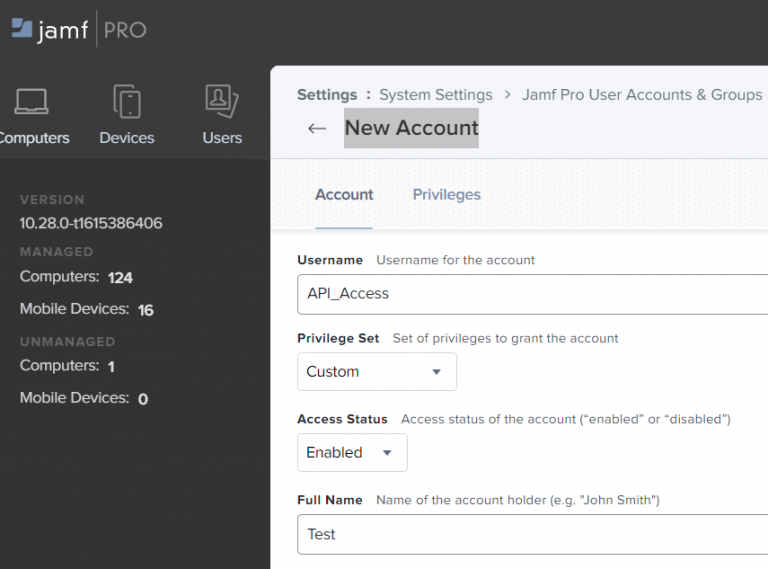
#Jamf pro status pro#
If you want to keep your server on premise, you can migrate your Jamf Pro server from macOS to one of the following servers: Red Hat Enterprise Linux, Ubuntu, or Windows. If you want to migrate your Jamf Pro server from macOS to Jamf Cloud, contact Jamf Support via Jamf Account. Mac computers with Apple silicon are not supported by the Jamf Pro Installer for macOS. Support ending for the Jamf Pro Server Installer for macOS-Support for using the Jamf Pro Installer for macOS will be discontinued in a future release (estimated removal date: March 2022). To follow up on my earlier post on the Jamf Pro Server Installer for macOS being retired, Jamf has added the following to the Deprecations and Removals section of the Jamf Pro 10.35.0 release notes: As of February 21st, 2022, Jamf’s published support for running Jamf Pro includes the following OS, database and Java versions: For more information, see the Migrating to Another Server article.įor those folks who are running on-premise Jamf Pro servers on Macs, I strongly recommend contacting Jamf Support right now and plan a migration if you haven’t already. If you want to keep your server on premise, you can migrate your Jamf Pro server to one of the following servers: Red Hat Enterprise Linux, Ubuntu, or Windows. If you want to migrate your Jamf Pro server from macOS to Jamf Cloud, contact Jamf Support. The Jamf Pro utilities that were included in the Jamf Pro Installer for macOS-Composer, Jamf Admin, Jamf Recon, and Jamf Remote-will be made available as a separate download. In addition, the Jamf Pro Installer for macOS will not be available to download. Support Ending for Hosting Jamf Pro Server on macOS-Starting with the release of Jamf Pro 10.37.0, hosting the Jamf Pro server on macOS will no longer be supported.
#Jamf pro status software#
In Jamf Pro, create a software distribution policy. Include the System Extension or Kernel Extension payloads as required for your implementation. To allow the deployment of Carbon Black Cloud macOS sensors on macOS Big Sur systems, create a configuration profile. Use Jamf Admin to upload the macOS Sensor DMG and Installation Script to Jamf Pro. Upload macOS Sensor DMG and Installation Script to Jamf Pro.Modify the cbcloud_install_unattended.sh script for the macOS sensor deployment. Create a Package by using Jamf ComposerĬreate a package for the installer in a temporary location on the endpoint.

To obtain and prepare the sensor kit for deployment, perform the following procedure. To deploy the macOS sensor by using Jamf Pro, perform the following steps:


#Jamf pro status install#
Optionally, the script can install the sensor in Kernel extension mode. The policy then runs a script that contains the installer package location and the company registration. Deploy a distribution policy that subsequently deploys a package that you created in Jamf Pro to a temporary location.

Create and deploy a configuration profile.


 0 kommentar(er)
0 kommentar(er)
